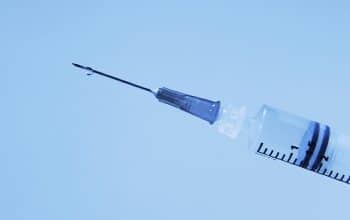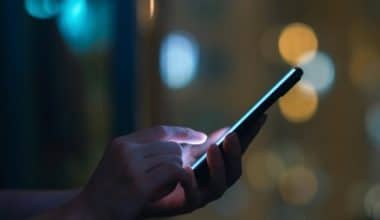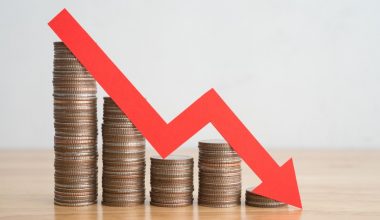The letter closers are sometimes the most difficult part of a letter to write. If English isn’t your first language, putting your thoughts on paper might be that much more of a challenge. Proper letter closers may make or break a letter, email, or another kind of written communication, whether it’s informal, official, corporate, or personal. In this article, you will learn about the various examples of formal and professional letter closers. So, keep reading!
Examples of Letter Closers
Below are the various examples of letter closers:
#1. Hope to Hear From You
This concluding expression is universally fitting and encourages subsequent correspondence. This particular phrase serves as an efficacious concluding statement when one desires a reciprocation from the recipient.
#2. With Gratitude and Respect
You can use this concluding remark to show appreciation for the recipient’s careful reading of your message. It is also advisable to employ it for missives of application and expressions of curiosity.
#3. Sincerely
Various settings deem the utilization of this particular professional sign-off appropriate, especially in formal business correspondences like letters or emails. The message effectively conveys sincerity in its target reception.
#4. Warm Regards
The statement may convey a sense of goodwill to the recipient. Also, for check-in, update, or subsequent studies emails or letters, it is recommended to use this closing phrase.
Formal Letter Closers
You are in the final stages of composing a formal letter. For most individuals, abstaining from using emojis is not a regular occurrence. Therefore, going through several sentences without incorporating an emoji can be a significant achievement, leading to a sense of relief or even jubilation. That is to say, it is important to finalize the formal letter closers.
Discovering appropriate ways to conclude a letter can sometimes be a challenging task. When engaging in written communication, it is customary to commence with a series of formalities. These typically include providing your address, specifying the date, and indicating the recipient’s address. To conclude the introductory phase, it is recommended to use a greeting that conveys a sense of formality and respect, rather than a casual “Hey.” It is also important to be aware of the appropriate way to conclude a letter, one that exudes a sense of importance and professionalism, without explicitly stating that the writer is a competent individual who is well-versed in crafting sophisticated letter closings. As a wise editor once said, brevity is the better part of valor.
Furthermore, effective formal letter closers should maintain a consistent tone with the rest of the letter. When composing good formal letter closers, it is important to find a balance between professionalism and approachability. It should convey a business-like tone without being excessively curt, and a personable tone without appearing overly familiar. Learn how to conclude a letter like a seasoned professional with these helpful tips. However, to assist you we’ve compiled a list of the various formal letter closers.
#1. Faithfully
If “respectfully” comes across as slightly deferential, this particular phrase elevates the level of deference even further. It is important to ensure that the chosen option is appropriate for the given occasion. If the reader experiences discomfort upon reading the text, there are alternative courses of action available.
#2. Regards
Similar to the phrases “sincerely” and “best,” this particular expression exudes reliability and modesty. However, it offers a range of optional add-ons to enhance its effectiveness.
#3. Best Regards
“Best regards” is a common closing phrase used in written communication to express well wishes or cordiality towards the recipient. It is a polite and professional way to end an email, letter, or other written correspondence. If one is worried that using only “regards” may come across as too formal or impersonal, it is perfectly acceptable to add “best” as well. This addition can be likened to including a courteous smile in written communication.
#4. Best
The term “best” is often perceived as casual and rushed by some individuals. What is the context or subject matter being discussed? Sending you my warmest regards and well wishes. However, some contend that it is the most favorable choice by default. Assess the situation and form your own opinion. Developing a habit of sending and receiving crucial emails and mastering the art of concluding a business letter can help you gain an intuitive sense of when such sign-offs are appropriate and when they may come across as inappropriate.
#5. Thank You Once More
Expressing gratitude multiple times can have a powerful impact. After all, why limit ourselves to only one instance of showing appreciation? It is also important to be mindful of your closing sentence, especially if it involves expressing gratitude. You wouldn’t want to ruin the conclusion by using an awkward phrase like “thanks again.”
#6. Appreciatively
This tool can assist in preventing the excessive usage of the word “thanks.” In addition, it has a smoother sound compared to the word “gratefully.”
#7. Yours Truly
The phrase “Yours truly” is a common closing used in written correspondence to express sincerity and goodwill towards the recipient. Similar to a navy blue jacket or a beige appliance, the phrase “yours truly” doesn’t draw attention to itself, which can be beneficial. The main point conveyed in this message is that the way the letter is signed off is not the crucial aspect to focus on.
#8. Sincerely
An alternative robust choice is the phrase “literally, I mean it.” The aim of utilizing sign-offs is to smoothly conclude a message without causing any disruption, and the term “sincerely” effectively fulfills this purpose.
Professional Letter Closers
In today’s digital age, the practice of crafting handwritten professional letter closers is gradually fading away. In contemporary times, individuals tend to utilize electronic mail and text messaging as a means of transmitting their business-related communication, as opposed to traditional postal services. Although digital communication has become a popular choice for many, it is crucial to acknowledge that handwritten letters possess a unique personal quality that cannot be replicated by simply typing a message on your electronic device and hitting the send button.
The sign-off is a crucial element when composing professional correspondence. The content that follows your signature in a business context holds greater significance than the preceding text. While the information preceding your signature can be informative and enlightening, it is the subsequent content that truly carries weight. When crafting a closing for your letter, it is important to ensure that there is no ambiguity regarding the desired response or the appropriate destination for any reply. Additionally, the closing should aim to conclude the letter in a manner that is considerate of the recipient’s preferences. Below are the various professional letter closers:
#1. Thanks
When sincerely expressing gratitude, this particular closing statement can be quite effective in concluding a letter. Also, when utilizing it as a customary closing for your letter, it may lack impact and fail to resonate with the reader if there is no apparent reason for expressing gratitude towards them. When expressing gratitude, it’s important to use “thanks” and its variations appropriately. Overusing these phrases can make it seem like you’re being overly effusive. Instead, reserve them for situations where you feel like you haven’t adequately expressed your appreciation. This will help ensure that your gratitude is sincere and well-received.
#2. Speak to You Soon
There are several variations to the common farewell phrase that people use. These include “see you soon,” “talk to you later,” and “looking forward to speaking with you soon.” The aforementioned sign-offs convey an intention to sustain the dialogue with your correspondent. Including a closing statement when confirming or scheduling an in-person meeting via letter or email can be a highly impactful way to conclude the correspondence.
While these conclusions are versatile enough to be employed in both formal and informal contexts, they generally convey a more formal demeanor. Hence, except “talk to you later,” which leans towards a more informal tone, all other phrases maintain a formal register.
#3. Hope This Helps
If you are in the process of assisting someone or providing guidance, this could serve as an ideal conclusion.
#4. Regards
Demonstrating professionalism and respect is crucial in any setting. One way to add a touch of emotion to your professional letter is by using the phrase “Warm regards.” However, it’s important to note that “Warmest regards” may come across as overly affectionate in a professional setting.
#5. Best Regard
“Best regards” is a commonly used phrase to close a message or email politely and professionally. It is also a way to express good wishes and convey a positive tone. Similar to the preceding closing statement, the phrase “best regards” conveys a sentiment of warm regards and positive intentions towards the addressee. This particular sign-off, although resembling “best,” exudes a more formal tone, typically utilized in business correspondences and with individuals who are not well-acquainted. Also, for a slightly less formal tone, one could use the phrase “warm regards,” while for a more formal approach, simply “regards” would suffice.
#6. Sincerely
The sign-off “Sincerely” or “Sincerely yours” is commonly used in professional letters due to its appropriateness. The concluding statement reaffirms the genuine purpose of your letter. It is a prudent option if you are not well-acquainted with the addressee, as it is advisable to opt for a customary and professional sign-off in such circumstances.
What Is the Importance of Professional Letter Closers?
Incorporating a professional sign-off in an official letter can significantly enhance the overall professional image of your organization. As it is not a frequent occurrence, its inclusion can have a lasting impact on the recipient. Incorporating a professional sign-off is a crucial element to consider when drafting a formal letter. Demonstrating professionalism is a key aspect of your business. In professional communication, it is customary to include a sign-off that includes the recipient’s name and job title.
Demonstrating professionalism is a key aspect of any successful business, as it helps to establish credibility and instill confidence in potential customers or clients. In professional correspondence, it is crucial to conclude a letter with a sign-off rather than merely signing it. Employing a professional sign-off conveys to the recipient that you have taken the initiative to include this minor yet significant professional gesture. Incorporating professional letter closers in a business letter can significantly enhance the overall professional image of your organization. Such phrases are rare, but their inclusion can leave a lasting impression on the recipient.
What Is a Closing Salutation?
“Sincerely,” “Yours truly” and “Cordially” work well for most forms of correspondence. However, if you know the reader well and the tone of the message calls for a more personal ending (for example, an email to congratulate a colleague on a promotion), you could use “Best wishes,” “Regards,” or “Warmest regards.”
What Is a Good Closing Statement for a Letter?
They include:
- Yours respectfully
- Best regards
- Cordially
What Can I Say Instead of Sincerely?
- All my best wishes.
- Best or warmest regards.
- Goodbye.
- Respectfully.
- Looking forward to your response.
- Take care
- Speak to you soon
- Warm regards
What Is the Warmest Regards?
When it comes to expressing your well-wishes and sentiments to someone, there are a plethora of options to choose from. One phrase that is commonly used as a more personal and intimate alternative to “best regards” is a great approach to express your gratitude and deep feelings. Thus, this remark can give warmth and authenticity to your message, making it more powerful. Thanking close friends and family members is appropriate while communicating. This genuine thank-you honors their importance in your life.
Is It Correct to Write Best Regards?
“Best regards” is a widely used phrase to conclude written correspondence, including letters and emails. Including the phrase ‘best regards’ after an email message is a customary practice that conveys respect and sincere wishes to the beneficiary.
References
- thebalancemoney.com
- indeed.com
- scribendi.com
Related Posts
- HOW TO END AN EMAIL: Detailed Guide With Examples
- Business Start Up from Scratch for Beginners (+ How-to-Start Guide)
- TO WHOM IT MAY CONCERN: All You Should Know!!!
- GRATITUDE AS A BUSINESS STRATEGY: Why Gratitude Is Important in Business
- EMPLOYEE APPRECIATION IDEAS: Best Ideas and Messages for Appreciating Employees
- PRO FORMA: Definition, Uses, Examples and How to Create It






